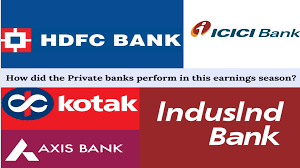Sneh Ticku, Pune
India’s banking sector remains resilient amidst global industry turmoil, thanks to its heavy reliance on local markets. Simultaneously, Indian consumer and capital goods companies anticipate favorable outcomes as commodity prices normalize following the peak witnessed during Russia’s invasion of Ukraine.
Varun Saboo, Head of Equities at Anand Rathi Share and Stock Brokers Ltd. in Mumbai, stated, “Across industries, we’re seeing costs coming off sharply, so that will reflect in earnings.” Saboo estimates that companies listed on the benchmark NSE Nifty 50 index could experience earnings growth of approximately 15%. Leading software services exporter Tata Consultancy Services Ltd. is set to initiate the first-quarter earnings season for Indian companies.
Analyst estimates compiled by Bloomberg suggest that Reliance Industries Ltd., a conglomerate holding a significant weightage in the Nifty 50 index, is poised for an increase in operating profit in the June quarter. This growth is attributed to robust performance in the company’s oil-to-chemicals and digital services segments.
The Reserve Bank of India’s Financial Stability Report reveals that the bad-loan ratio at Indian banks reached a decade-low of 3.9% by the end of March 2023. The central bank expects this ratio to decline further to 3.6% by March 2024. Among the top private sector lenders in the Nifty 50 index—HDFC Bank, ICICI Bank, Axis Bank, and Kotak Mahindra Bank—projected quarterly profits may witness growth ranging from 18% to 38%, with net interest margins expected to remain high, surpassing the 4% mark, one of the highest in Asia.
State Bank of India, the country’s leading lender, is expected to more than double its quarterly profit, according to Bloomberg estimates. The central bank’s interest rate hikes have contributed to increased lending margins for local lenders. Although a possible repricing of deposits could slightly impact margins, it is unlikely to have a significant effect until the central bank begins reducing rates.
Rajesh Cheruvu, Chief Investment Officer at LGT Wealth India, predicts a contraction of around 30 basis points in net interest margins for the sector until the key interest rate is lowered, which is not expected to occur before September-end, according to a Bloomberg survey.
While a reduction in energy and material prices and improved supply chains after easing Covid-related restrictions are expected to alleviate cost pressures, consumer, capital goods, and cement companies are likely to witness improved earnings. Lower crude prices will benefit paint manufacturers, and a drop in palm oil prices will aid producers of soaps, detergents, and packaged foods, as stated by Ajay Thakur, a consumer-sector analyst at Anand Rathi.
Refiners are expected to benefit from high retail prices of gasoline and diesel, with Indian Oil Corp., Bharat Petroleum Corp., and Hindustan Petroleum Corp. projected to experience earnings growth.
India’s technology sector, valued at $245 billion, may face challenges in pricing, securing large deals, and maintaining margins due to its significant exposure to banks. The big four software services exporters—Tata Consultancy Services Ltd., Infosys Ltd., HCL Technologies Ltd., and Wipro Ltd.—derive more than a quarter of their revenues from the financial sector. Increased wages may further impact their margins, according to analysts at Jefferies and BNP Paribas.
However, some experts believe that the market has already factored in these risks. The NSE Nifty IT index is currently trading at a price-to-earnings ratio of less than 24, down from its record high of around 39 at the beginning of 2022. Siddarth Bhamre, Head of Research at Religare Broking Ltd., commented, “For me, IT is available at reasonable valuations,” after a year and a half of market concerns regarding the recession and reduced spending.
